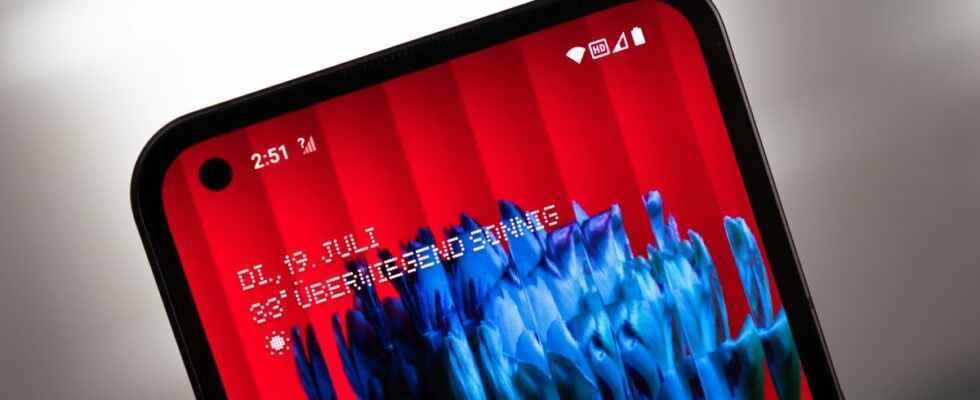Nothing has admitted that the Nothing Phone (1)’s display wasn’t quite so accurate with the truth. Contrary to what was previously stated, the smartphone’s screen does not even reach 1,200 nits in terms of brightness. In fact, the value is much lower.
Nothing Phone (1): Only 700 instead of 1,200 nits
With the Nothing Phone (1), OnePlus co-founder Carl Pei has once again achieved what he already did impressively with the first OnePlus cell phones: the cell phone was extensively reported on in advance and a certain amount of hype quickly set in. As it turns out now, you have the Information on the performance of the display somewhat exaggerated. The screen is not as bright as claimed at the top.
A look at the smartphone’s specifications at launch revealed that the display should be able to achieve a peak brightness of 1,200 nits – at least on parts of the screen when HDR content is displayed. The manufacturer subsequently corrected this information. Official is now from 700 nits maximum the speech (source: ComputerBase).
We also noticed in our test of the Nothing Phone (1) that this Display could definitely be a bit brighter. Better brightness has a very positive effect, especially in strong sunlight. At a price of 469 euros, 700 nits are also perfectly fine. So Nothing shouldn’t have exaggerated here.
Here’s what we think of the Nothing Phone (1):
The other properties of the display is nothing stuck to the truth. The OLED screen really comes in at 6.55 inches diagonally, has a resolution of 2400 x 1080 pixels and offers a refresh rate of 120 Hz.
Nothing Phone (1): Build quality could be better
Shortly after the cell phone was released, the first owners complained that the quality of the workmanship left a lot to be desired. For some users triggers the special LED lighting slightly from the back. There is also talk of dead pixels on the display. We could not determine anything of this in our test device.
